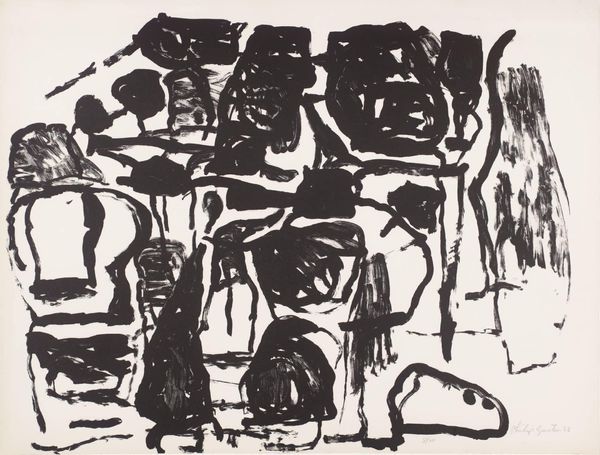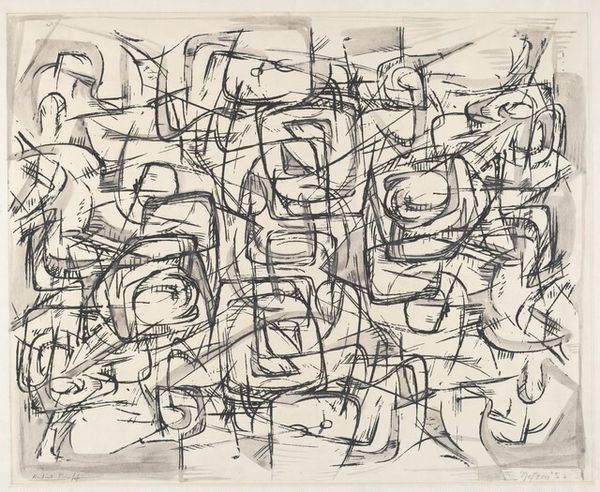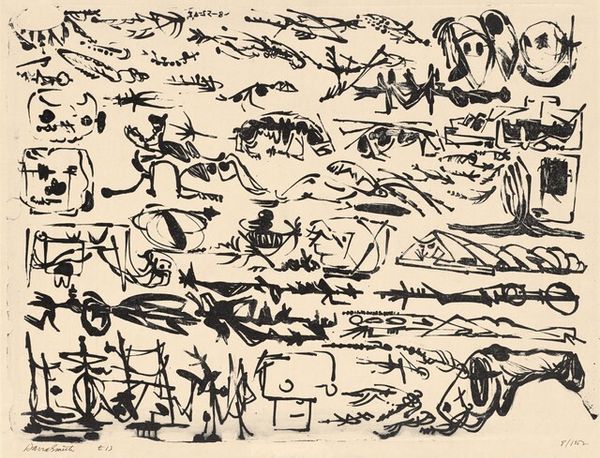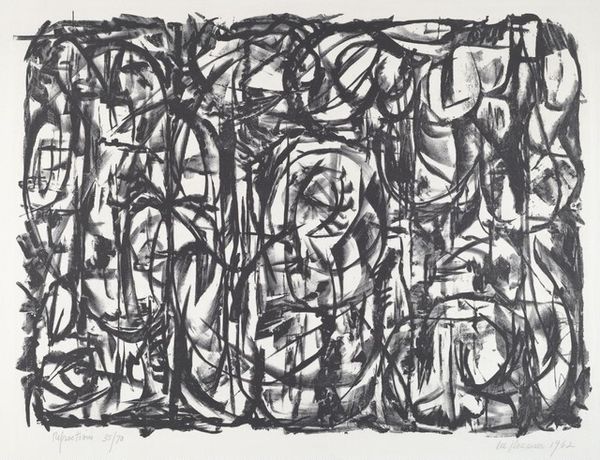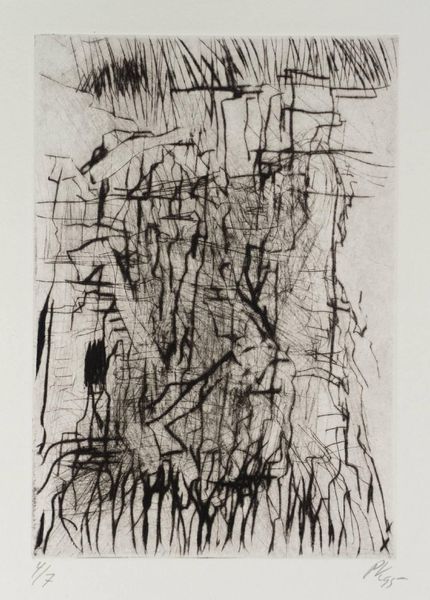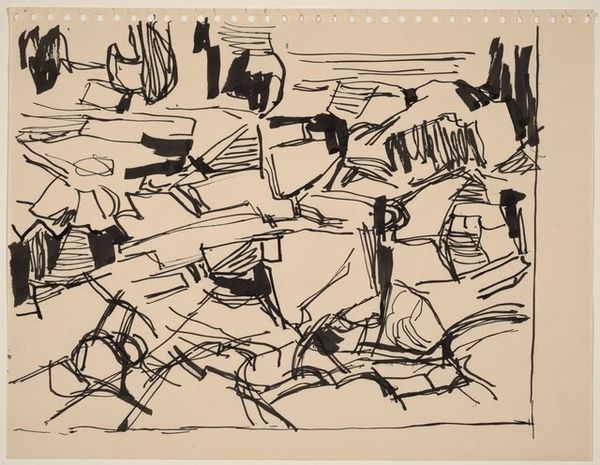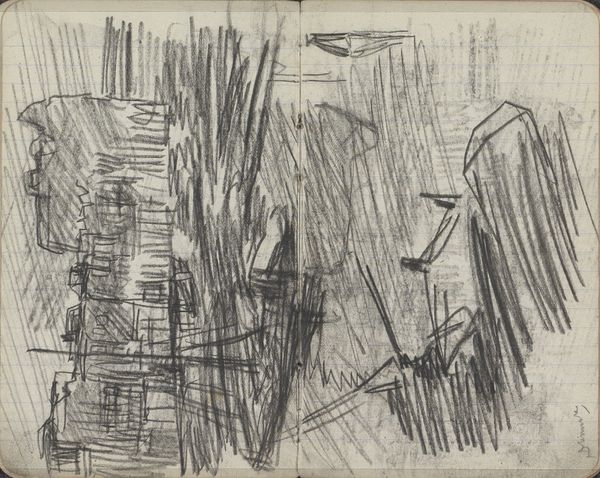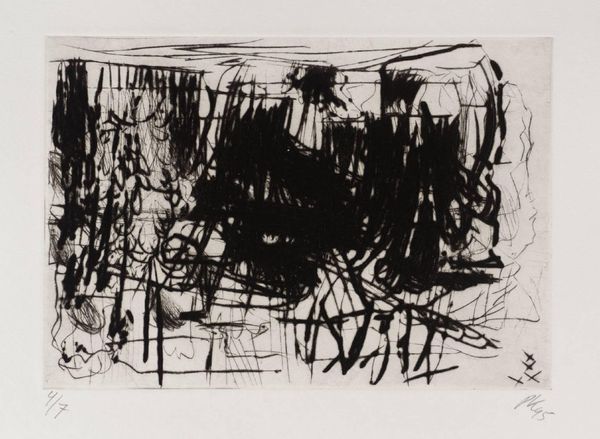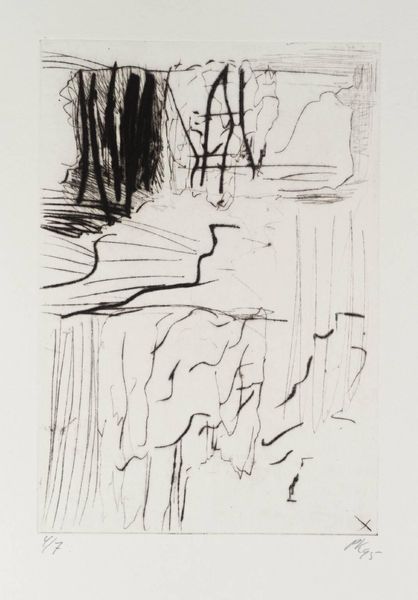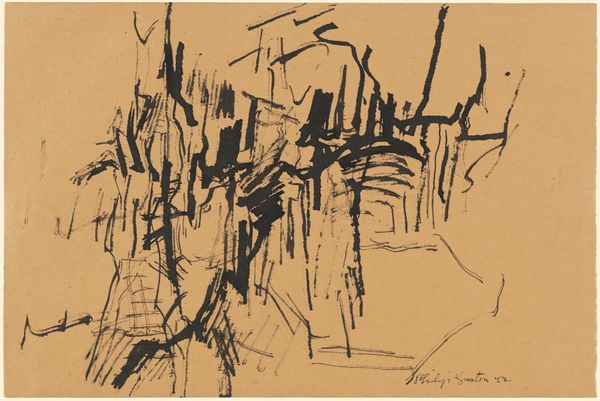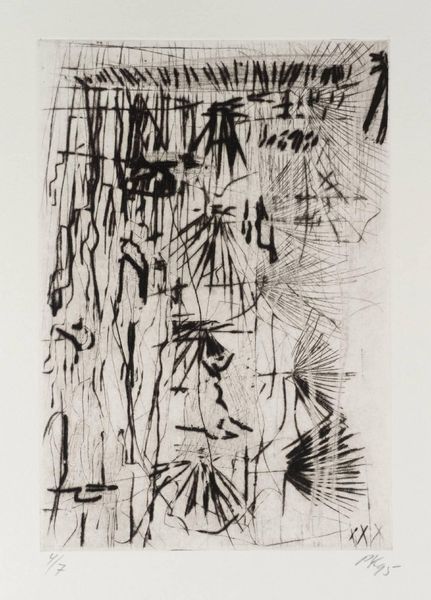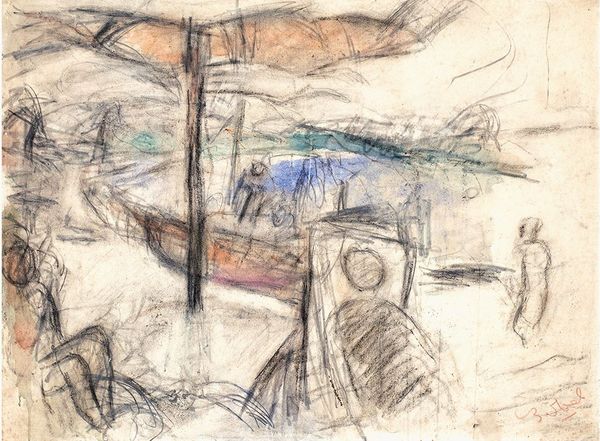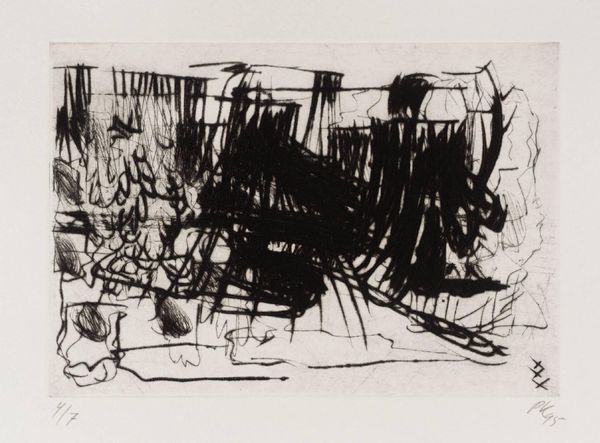
drawing, print, ink
#
abstract-expressionism
#
drawing
# print
#
figuration
#
ink
#
line
Copyright: National Gallery of Art: CC0 1.0
Curator: Misch Kohn's "Procession," created in 1961 using ink on paper, offers a fascinating study in abstract figuration. Editor: It feels chaotic, yet strangely ordered. A multitude of figures emerging from a kind of murky subconscious. What's your initial reaction to this frenetic energy? Curator: Well, the lithographic process that Kohn embraced is key here. Think about the physical labor involved – the meticulous carving, the layering of ink, the pressure of the press itself. It speaks to a mid-century ethos of industrial production finding its way into artmaking. Editor: And within that mechanical process, a deeply human drama unfolds, no? The repetition of mask-like faces – each with subtly altered features – creates a potent symbol of shared identity and perhaps, loss of individuality within a crowd. The procession motif carries echoes of ancient rituals and modern anxieties about collectivism. Curator: Absolutely. But it’s also the way Kohn exploits the material possibilities of ink. Notice the deliberate drips, the uneven saturation. These aren't accidental; they are actively embracing chance and gesture within a traditionally controlled printmaking medium. This adds another layer of understanding the labor and, arguably, collaboration of artist and medium. Editor: These masks, repeated in variations… there is a cultural memory embedded here, perhaps of funeral rites, celebrations… Or maybe more aligned to modern experience – parades, marches… each has carried this sense of people with shared interest making spectacle. Curator: That’s a great observation, and maybe why it feels chaotic. Each line, each blot of ink feels deliberate and brings tension as well as direction to your own interpretation of these actions. Editor: So ultimately, it invites viewers to project their own narratives onto this abstracted, symbolic representation of collective human experience. It gives us freedom to project both past trauma and even modern disquietudes onto these faces and implied movements. Curator: I agree entirely. Seeing the combination of technical application together with these suggestions allows us both a visual experience and an insight to its creation, the work itself feels profoundly rich with depth. Editor: For me, “Procession” evokes the enduring power of images to communicate cultural memory and emotional resonance and give personal freedom, and now thanks to you, that feeling becomes more understood.
Comments
No comments
Be the first to comment and join the conversation on the ultimate creative platform.
